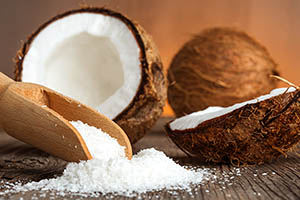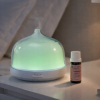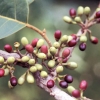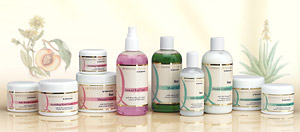Five Different Uses For Fractionated Coconut Oil
 Coconuts are certainly having their moment in the spotlight.
Coconuts are certainly having their moment in the spotlight.
Health and wellbeing experts are propounding the benefits of it as a superfood and for revitalising the body, and people are increasingly incorporating coconuts into their day-to-day living.
Part of the appeal of coconut is that when in oil form it’s incredibly versatile. Whether used as a cooking ingredient or as an emollient in a cream or lotion, it has plenty of useful applications. However, when coconut oil is used in aromatherapy and beauty treatments, therapists usually prefer to use fractionated coconut oil which is lighter in consistency.
Fractionated coconut oil is becoming increasingly popular and can easily be used to improve health and wellbeing, and is exceptionally good for taking care of your skin.
What is fractionated coconut oil?
Since crude coconut butter is not always suitable for certain industries and applications (such as in skin care), it is processed to remove some of the long-chain triglycerides. The remaining oil now contains mostly medium-chain triglycerides which are similar to those found in the skins natural lubricant, sebum. Removing the long-chain triglycerides also improves the stability of the oil and increases its shelf-life.
When coconut oil has been fractionated, capric acid and caprylic acid volumes increase proportionally as other components are removed, creating a strong antioxidant and disinfectant action. Combined with its great moisturizing action, this is yet another reason fractionated coconut oil is used so much in aromatherapy and beauty treatments.
So what can you do with fractionated coconut oil?
- Use it to fade stretch marks
Coconut oil has long been heralded as a treatment for fading stretch marks. For an effective blend containing essential oils add 3 drops of neroli and 2 drops of frankincense to 10mls of coconut oil. These essential oils are known to help reduce the appearance of stretch marks. Other useful essential oils for stretch marks include carrot seed, helichrysum, jasmine, lavender, orange bitter, patchouli, rose otto, and sandalwood.
- In skin care
Coconut oil is probably best known for it’s use as a beauty treatment. Whether rubbed on the skin or hair it penetrates deeply, nourishes, moisturises, and softens. This is because of the high protein content, which is believed to help repair the skin. Consequently, it is often used on cracked lips, discolouration patches, and even to remove makeup.
- In hair care
If you have dry, damaged hair, it’s also worth trying coconut oil.The capric and caprylic acids work as antioxidants and disinfectants, and the low molecular weight of the oil means it can easily penetrate the hair shaft. Apply the coconut oil directly on to the hair and leave for 15 to 30 minutes. Alternatively you can add it to a mild shampoo, but don’t add to much (no more than 50/50) as it doesn’t mix well with certain shampoo types – especially non-SLS types. It’s often a case of trial and error, so don’t be worried about experimenting.
- As a shaving lotion
Coconut oil can be used to great effect as a great natural shaving lotion. It creates a wonderfully smooth surface for razors, while nourishing and soothing the skin. Put a few drops in the palm of your hand and apply to the skin before shaving.
- Anti-bacterial protection
Fractionated coconut oil has antibacterial properties and can be mixed with anti-bacterial essential oils to create a natural treatment for wounds. Cinnamon leaf, cedar atlas, ravensara, eucalyptus, bergamot, geranium, tea tree, thyme and pine are regarded as some of the best natural anti-bacterial essential oils. Add four to five drops of one of these essential oils to 10mls of fractionated coconut oil and apply to the area that needs disinfecting.
Don’t be afraid to explore
These aren’t the only uses for fractionated coconut oil so you shouldn’t be afraid to explore all of the possibilities you may read about. Just be sure that the applications are safe and that recipes refer to fractionated coconut oil, not any other derivations.
When mixing with essential oils, ensure you are adding no more than five drops of essential oil in total to 10mls of fractionated coconut oil. For certain essential oils such as thyme, the number of drops used may need to be lower if you have sensitive skin, so check before making your blend.
Copyright © Quinessence Aromatherapy Ltd 2020. Written by Geoff Lyth

































